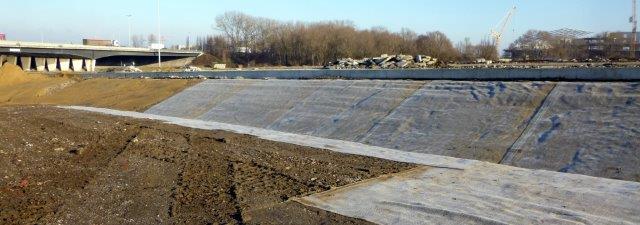Confinement and final capping
Pollux Consulting has extensive knowledge and experience in the application of different materials in a landfill confinement layers

Final choice of materials is determined by:
- the type of landfill and its need for long term protection. As example can be mentioned that the flushing bioreactor concept foresees a shorter life time for organic waste landfills than for hazardous waste landfills. The use of HDPE and clay can therefore have different purposes and applications
- detailed stability and settlement analysis of the waste body ; this determines the type and use of both artificial and mineral layers
- detailed analysis of the leachate and its aggressive character to certain confinement materials ; especially clay can be vulnerable to specific components and might require specific protection. Check out mining of bentonite clay
This might lead to specific engineering measures :
- Use of light coloured HDPE to prevent extensive wrinkling during placement
- Use of overlapping HDPE instead of welding in certain applications with extensive settlement
- Pre-balasting specific areas of the future landfill in order to induce settlement
- Including active protection layers by means of secondary control drainage systems
-
Installing vertical barriers as active protection system
Identical materials are used for both landfill construction and final capping.
The installation of confinement layers at bottom and top of the landfill, requires specific attention to water household at the level of leachate and precipitation
